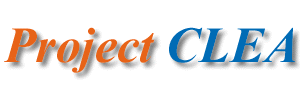Links & Tools

California
Center for Astronomy and Astrophysics
Links & Tools

BackyardAstronomy.org is our 'partner' organization and the 'Educational Arm' of CalAstro. Please be sure to visit their web site by clicking on the banner below…
Your Portal to the Stars
Do you own a telescope? Are you looking to purchase a telescope? Perhaps you'd like to know when the next star party is in your area. BackyardAstronomy.org is the website for you. Make BackyardAstronomy.org your portal for star parties across the globe.
Don't own a telescope, and would still like to view the heavens? BackyardAstronomy is for you as well! We'll put you in touch with Amateur astronomer's in your area so that they may share with you the wonders of the heavens. As our affiliate program grows, we'll notify you of any new affiliate in your area so that you may track their public activities as well.

We also highly encourage all serious observational astronomers in the San Francisco Bay Area to subscribe to "The Astronomy Connection" (TAC). TAC is a free service open to all that provides a convenient place for the exchange of information.
(CalAstro has been a proud member of TAC since 1996)

|
RAS Observatory Provides internet access to high-quality professional-grade robotic resources for professional and amateur research projects and public use |
|
|
The Remote Astronomical Society an organization for the coordination and advancement of astronomy |
|
|
|
|
The RAS Observatory is located under the darkest Skies in New Mexico. The dark skies enhance viewing and photographing a wide variety of astronomical objects.
![]()

![]()
If
your interest is 'photometry' and 'Cataclysmic Variables', then the
"Center for Backyard Astrophysics" (CBA), with headquarters at Columbia
University, is the place for you. They are another of
our 'Affiliate' organizations, and one of our primary partners in
research. At their site you'll find everything you need to get
started today!

A global network of small telescopes
dedicated to photometry of cataclysmic
variables.
www.astro.columbia.edu

Another of our affiliates, "Starlink"
is the home of probably some of the best data reduction and analysis
tools available anywhere. Be sure to check out their Java
tools. We highly recommend them!
NEWS!
Starlink Project Has
Ended!
Funding for the StarLink Project was eliminated as of June 30th,
2005. No new software will be developed. Existing software
is still currently available on the website. At some later date
the StarLink software will be archived. CalAstro has obtained
copies of all of the latest StarLink software. Our copies will be
available to associates when it is no longer available from StarLink
support.
Starlink's main objectives are to:


| This site is mostly about constructing low frequency, cross-correlating, meridian transit radio interferometers and about doing radio astronomy with them. |
| Such an instrument has two radio receivers, fed by individual antennas. The antennas are spaced some "baseline" distance apart. The two receivers run coherently, meaning that not only do they work at roughly the same frequency, they are precisely phase-locked together. This involves having the two receivers share a common local oscillator (LO). They use a normal stereo soundcard (and some purpose made software) to read the audio output of the two receivers. The baseline distance determines the resolution of an interferometer, so even simple equipment can be used to build high resolution radio telescopes. |

